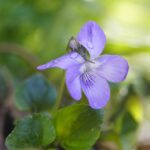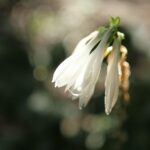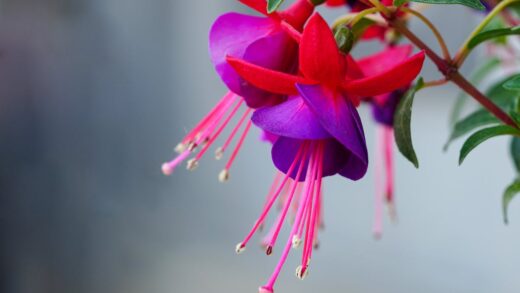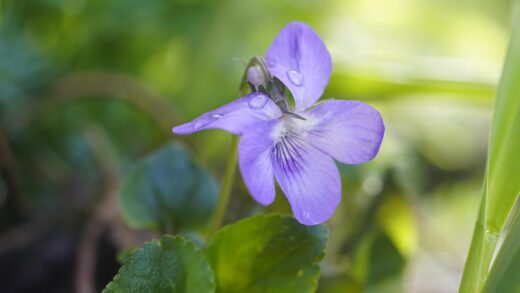Successfully establishing an azalea in your garden landscape begins long before the plant is even placed in the ground. The entire process, from selecting a healthy specimen to preparing the perfect planting site, lays the foundation for decades of vibrant blooms and vigorous growth. Unlike many other shrubs that can tolerate a wide range of conditions, azaleas have a specific set of requirements that are non-negotiable for their long-term survival and prosperity. Proper planting is not merely about digging a hole; it is about creating a customized environment that mimics the plant’s native woodland habitat. This initial investment of time and effort is the single most important factor in cultivating a truly breathtaking azalea display.
The journey starts with choosing a robust and healthy plant from the nursery. Look for a specimen with lush, deep green foliage that is free from any signs of pests or diseases, such as spots, yellowing, or webbing. It is beneficial to see a plant with a well-developed root system, but one that is not “root-bound,” meaning the roots have not started to densely circle the inside of the container. Gently sliding the plant out of its pot can give you a good indication of the root health; the roots should be firm and light-colored. Also, consider the ultimate size and growth habit of the specific variety you choose to ensure it is a suitable match for your intended location.
Once you have your plant, the focus shifts to site preparation, a step that cannot be overstated in its importance. Azaleas demand acidic soil with a pH between 4.5 and 6.0, and exceptional drainage is absolutely critical to prevent root rot. Before you even think about digging, it is wise to perform a soil test to understand your starting point. If your soil is heavy clay or alkaline, you will need to amend it generously with organic matter like pine bark fines, composted oak leaves, or sphagnum peat moss. This not only helps to lower the pH but also dramatically improves the soil’s structure, creating the loose, airy medium that azaleas love.
The actual act of planting requires a specific technique due to the azalea’s shallow, fibrous root system. The common mistake is to plant them too deeply, which can quickly lead to the decline and death of the shrub. A cardinal rule for azaleas is to plant them high. The hole should be dug two to three times as wide as the root ball but no deeper than the root ball itself. In fact, in heavy soils, the hole should be even shallower, so that when the plant is set in place, the top of the root ball sits one to two inches above the surrounding soil level. This elevated position is crucial for ensuring that water drains away from the crown of the plant.
Preparing the ideal planting location
The selection and preparation of the planting site are foundational to the future success of your azalea. The ideal location offers a combination of filtered sunlight, protection from harsh elements, and the correct soil profile. Azaleas thrive in what is often described as “dappled shade” or “high shade,” such as the environment found beneath tall, open-canopied trees like pines or oaks. This setting provides bright, indirect light while shielding the plants from the intense, scorching rays of the midday and afternoon sun. Planting on the northern or eastern side of your home can also replicate these favorable light conditions.
More articles on this topic
Beyond light, you must consider the physical protection of the plant. Azaleas are susceptible to damage from strong, drying winds, which can cause significant moisture loss from their leaves, a condition known as desiccation. This is particularly a concern during the winter months for evergreen varieties. Planting them in a location sheltered by a structure, a fence, or a cluster of other larger shrubs can create a microclimate that mitigates wind damage. At the same time, ensure there is still good air circulation around the plant to help prevent the development of fungal diseases.
The cornerstone of site preparation is achieving the perfect soil conditions. Azaleas are ericaceous, meaning they require acidic soil to properly absorb nutrients. Before planting, you must test your soil’s pH. If the pH is above 6.0, you will need to take steps to lower it. Incorporating amendments such as elemental sulfur, iron sulfate, or large quantities of acidic organic matter like peat moss, pine bark fines, or composted oak leaves is essential. This process should not be rushed; the amendments should be thoroughly tilled or mixed into the top 6 to 8 inches of soil over a wide area, not just in the planting hole itself.
Creating a well-draining environment is equally as important as achieving the right pH. Azaleas have very fine, delicate roots that will quickly succumb to rot in heavy, waterlogged soil. If your garden consists of heavy clay, simply amending the planting hole is not sufficient as it can create a “bathtub effect,” where water collects and drowns the roots. In such cases, the best solution is to plant in raised beds or to create a wide, shallow planting area where the azalea is placed with its root ball sitting several inches above the native soil grade, with amended soil mounded up around it to form a gentle berm.
The step-by-step planting process
Once your site is prepared, you can begin the physical process of planting your azalea. Start by digging a hole that is at least twice as wide as the plant’s root ball, but no deeper. The width is important as it provides a large area of loosened, amended soil for the fine roots to easily penetrate and establish themselves. Remember the rule to plant high; the depth of the hole should be such that the top of the root ball will sit about one to two inches above the level of the surrounding ground. This simple technique is one of the most effective ways to prevent issues with drainage and crown rot.
More articles on this topic
Before placing the plant in the hole, it is critical to address the root system. Azaleas grown in containers are often root-bound, with their roots forming a dense, tightly wound mat. If you plant it this way, the roots may never grow outwards into the new soil, and the plant will struggle to establish. Gently remove the plant from its pot and inspect the roots. If they are circling the ball, you must loosen them. You can use your fingers to gently tease them apart, or if they are very dense, use a sharp knife or hand cultivator to make several vertical slices around the outside of the root ball from top to bottom. This encourages the roots to grow outward into the prepared soil.
Carefully position the plant in the center of the hole, making sure the top of the root ball is at the correct height, slightly above the grade. Once you are satisfied with the positioning, begin backfilling the hole with the amended soil you excavated earlier. Use your hands to gently but firmly pack the soil around the root ball, eliminating any large air pockets. Air pockets can cause the roots to dry out and die. Fill the hole about halfway, and then water it thoroughly to help the soil settle. After the water has drained, finish backfilling with the remaining soil.
After the hole is completely backfilled, create a shallow saucer or basin of soil around the perimeter of the planting area. This basin will act as a reservoir, helping to direct water to the root zone and prevent it from running off. Water the newly planted azalea thoroughly one more time. The final and crucial step is to apply a two- to three-inch layer of organic mulch, such as pine straw, shredded bark, or oak leaves, over the entire planting area, but be careful to keep the mulch from piling up against the main stem of the plant. This mulch will help conserve moisture, regulate soil temperature, and suppress weeds.
Propagation through cuttings
Propagating azaleas from cuttings is an incredibly rewarding way to create new plants that are genetically identical to the parent shrub. This method, known as vegetative propagation, is most successfully performed using softwood cuttings taken at the right time of year. The ideal window for taking these cuttings is in the late spring or early summer, after the spring growth flush has begun to harden off slightly. The wood should be mature enough to not wilt immediately, but still flexible enough to bend easily; if it snaps, it is too old, and if it is too floppy, it is too young.
To take a cutting, select a healthy, vigorous stem from the current season’s growth. Using a sharp, sterilized knife or pruning shears, make a cut that is about four to six inches long. The cut should be made just below a leaf node, which is the point on the stem where a leaf emerges. Once you have your cutting, carefully remove the leaves from the lower half of the stem. It is also common practice to cut the remaining large leaves in half horizontally to reduce the surface area for water loss through transpiration, which helps the cutting conserve moisture while it develops roots.
The next step is to prepare the cutting for planting. Although not strictly necessary, dipping the cut end of the stem into a rooting hormone powder or liquid can significantly increase the success rate of rooting. The rooting hormone contains auxins, which are plant hormones that stimulate root initiation. Tap off any excess powder before gently inserting the cutting into your prepared rooting medium. The cutting should be inserted about one to two inches deep, just enough so that it can stand upright on its own.
A proper rooting medium and environment are critical for success. A mixture of 50% peat moss and 50% perlite or coarse sand provides the ideal balance of moisture retention and aeration. Fill small pots or a clean tray with this mixture and moisten it thoroughly before inserting the cuttings. To maintain the high humidity that cuttings need to survive, you can cover the pots or tray with a clear plastic bag or a plastic dome, ensuring the plastic does not touch the leaves. Place the cuttings in a warm location with bright, indirect light, and keep the medium consistently moist but not soggy. Roots should begin to form in four to eight weeks.
Other propagation methods
While taking softwood cuttings is the most common and reliable method for the home gardener to propagate azaleas, there are other techniques that can also be employed with success. One such method is layering, which is a very simple process that allows a new plant to form while it is still attached to the parent. In the spring, select a long, low-hanging branch that can easily be bent down to touch the ground. At a point about 8 to 12 inches from the tip of the branch, carefully wound the stem by making a shallow cut or scraping away a small section of the bark on the underside.
Once the stem is wounded, you can apply a small amount of rooting hormone to the injured area to encourage faster root development. Then, dig a small trench in the soil directly underneath the wounded section of the branch. Bend the branch down and bury the wounded part in the trench, securing it in place with a bent piece of wire or a rock. The tip of the branch should be left exposed and gently bent upwards out of the soil. Keep the soil around the layered section consistently moist throughout the growing season. By the following spring, a healthy root system should have developed from the buried, wounded section. At this point, you can sever the new plant from its parent and transplant it to its new location.
For some deciduous azalea varieties, propagation can also be achieved through hardwood cuttings. This method is performed during the plant’s dormant season, typically in late autumn or winter after the leaves have dropped. The process is similar to taking softwood cuttings, but you will be using mature, woody stems from the previous season’s growth. Cuttings should be six to eight inches long and taken from healthy, straight stems. Because hardwood cuttings take much longer to root, they are often placed in a cold frame or a protected outdoor bed over the winter to allow callusing to occur before root development begins in the spring.
Growing azaleas from seed is also possible, but it is a much more complex and time-consuming process that is generally reserved for plant breeders and dedicated hobbyists. Azalea seeds are incredibly fine, like dust, and require very specific conditions to germinate, including sterile growing media and consistent moisture. Furthermore, plants grown from the seed of a hybrid azalea will not be true to the parent plant, meaning the resulting offspring may exhibit a wide variety of different characteristics in terms of flower color, size, and growth habit. This genetic variability is what breeders use to create new cultivars, but for a home gardener wanting to duplicate a favorite plant, vegetative methods like cuttings or layering are far more practical and reliable.


















